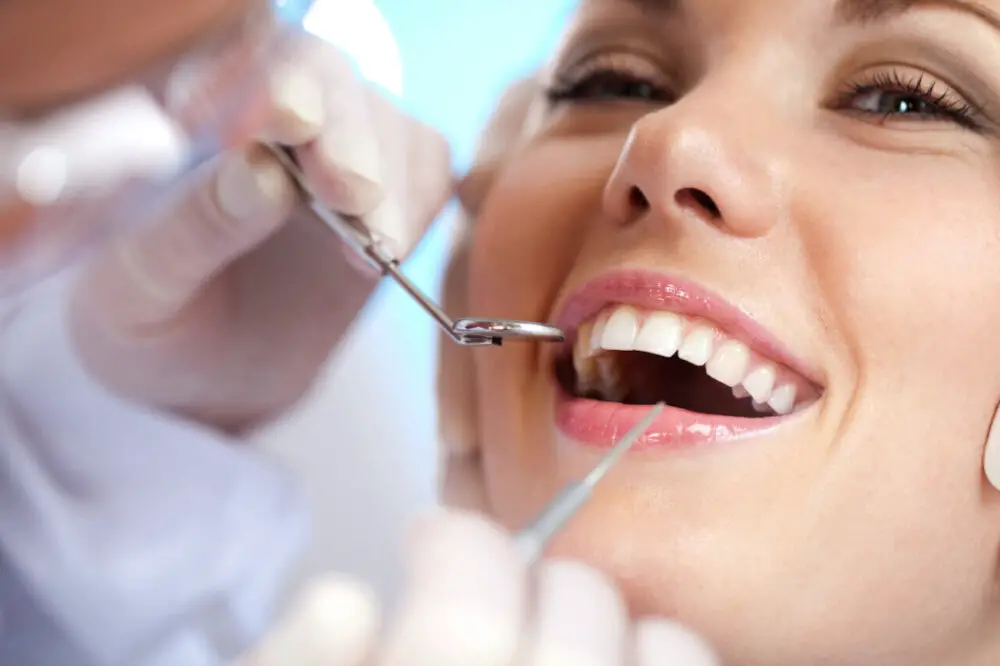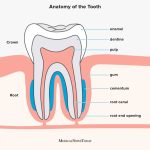Wisdom Teeth Extraction: How Long Should Gauze be Used for Optimal Healing?

Wisdom teeth extraction is a common procedure that many people have to undergo during their lifetime. This surgery involves the removal of the third molars, located at the back of the mouth. The recovery period after the surgery can be uncomfortable and painful, but it is essential to follow the post-operative instructions to ensure optimal healing. One of the critical steps in the recovery process is the use of gauze to stop bleeding and promote clotting. However, patients often wonder how long they should use gauze after wisdom teeth extraction to ensure the best possible outcome. Gauze is a medical dressing that is used to apply pressure to the extraction site, which helps to stop bleeding and promote healing. The use of gauze after wisdom teeth extraction is essential for the first few hours after the surgery. The dentist or oral surgeon will provide the patient with gauze pads to use during this time. However, it is crucial to know when to stop using gauze and switch to other methods of promoting healing. Using gauze for too long or too little can have adverse effects on the recovery process. Therefore, it is essential to understand the optimal duration for using gauze after wisdom teeth extraction.
Wisdom teeth extraction is a common dental procedure that involves removing one or more of the four molars located at the back of the mouth. These molars, or \third molars,\ often cause problems when they emerge during the late teenage years or early adulthood. They can become impacted, meaning they don’t fully emerge from the gum line, or they can grow at an angle, causing pain, swelling, and infection. In some cases, wisdom teeth extraction is necessary even if there are no apparent problems, as a precautionary measure to prevent future issues. The procedure is typically performed under local anesthesia and may involve cutting through the gums and removing the tooth or teeth in pieces. After the procedure, gauze is used to control bleeding and promote healing, but it’s important to know how long to use it for optimal results.
Gauze plays a crucial role in the healing process after wisdom teeth extraction. It acts as a barrier between the surgical site and the oral environment, preventing bacteria and other foreign particles from entering the wound. Gauze also helps to control bleeding by absorbing excess blood and forming a blood clot. This clot is essential for proper healing and prevents the formation of a dry socket, which can be painful and delay the healing process. Additionally, gauze provides support and pressure to the surgical site, reducing swelling and promoting faster healing. Therefore, using gauze for the recommended amount of time is crucial for optimal healing after wisdom teeth extraction.
What is gauze used for after wisdom teeth extraction?

Gauze is a thin and breathable fabric that is commonly used to control bleeding after wisdom teeth extraction. This is because the removal of wisdom teeth can cause significant bleeding, which can lead to discomfort, pain, and prolonged healing time. The gauze is placed over the extraction site, where it absorbs any excess blood and promotes the formation of a blood clot. This blood clot is essential for optimal healing, as it protects the extraction site from infection and helps to regenerate new tissue. Gauze is usually used for the first 24-48 hours after the extraction, or until the bleeding stops completely. In addition to controlling bleeding, gauze is also used to protect the extraction site from external contaminants. This is because the extraction site is vulnerable to infection, and any exposure to bacteria or debris can significantly slow down the healing process. Gauze acts as a barrier between the extraction site and the outside world, preventing any unwanted particles from entering the wound. This not only promotes faster healing, but it also reduces the risk of complications such as dry socket. It is important to follow the dentist’s instructions on how long to use gauze after wisdom teeth extraction, as using it for too long can cause irritation and delay the healing process.
Gauze plays a crucial role in the healing process after wisdom teeth extraction. It helps to control bleeding by providing pressure on the surgical site, which aids in the formation of a clot. This clot is essential for the healing process because it protects the wound from bacteria and debris, and also provides a foundation for new tissue growth. Additionally, gauze can help to reduce swelling by absorbing excess fluids and promoting drainage. However, it is important to use gauze correctly, as leaving it in for too long can delay healing, and removing it too soon can cause bleeding. Following your dentist’s instructions for gauze use can help to ensure optimal healing after wisdom teeth extraction.
Gauze is an essential material used in various medical procedures, including wisdom teeth extraction. One of the primary purposes of gauze in this context is to control bleeding and promote clotting. After the extraction, the dentist places a piece of gauze over the socket and instructs the patient to bite down on it firmly. The pressure from the gauze helps to compress the blood vessels around the socket, reducing blood flow and allowing a blood clot to form. This clot is crucial for the healing process, as it protects the socket and prevents infection. Therefore, using gauze for the optimal amount of time is crucial to ensure proper healing.
How long should gauze be used after wisdom teeth extraction?

Wisdom teeth extraction is a common dental procedure, and after the extraction, it is normal to experience some bleeding. To control the bleeding and promote healing, gauze is placed over the extraction site. The length of time that gauze should be used after wisdom teeth extraction varies depending on the individual and the severity of the extraction. Typically, gauze should be used for the first 24 hours after the procedure. After that, it is recommended to use gauze only as needed, usually for a few hours after eating or drinking. Using gauze for too long after wisdom teeth extraction can actually slow down the healing process as it can interfere with the formation of a blood clot, which is crucial for proper healing. It is important to follow the instructions provided by your dentist or oral surgeon regarding gauze usage. If bleeding persists beyond the first 24 hours, it is important to contact your dentist or oral surgeon immediately as it may be a sign of a more serious issue. With proper care and attention, including the appropriate use of gauze, healing after wisdom teeth extraction can occur smoothly and quickly.
Dental professionals strongly recommend using gauze for the first few hours after wisdom teeth extraction to control bleeding and promote blood clotting. It is advised to bite down on the gauze gently but firmly for about 45 minutes to an hour, then replace it with a new one as needed. The duration of gauze usage may vary depending on the individual’s situation, but it is usually recommended to use it for the first 24 to 48 hours after the surgery. Overuse of gauze can delay healing and cause further irritation to the surgical site, so it is important to follow dental professionals’ recommendations and use it as directed. It is also crucial to maintain good oral hygiene practices, such as brushing and rinsing gently, and avoiding hard or crunchy foods, to ensure optimal healing after wisdom teeth extraction.
There are several factors that can influence the duration of gauze usage after wisdom teeth extraction. Firstly, the extent of the surgical procedure can have an impact on how long gauze needs to be used. If the extraction was a simple procedure, then gauze may only need to be used for a few hours, whereas a more complex procedure may require gauze to be used for up to 24 hours. Additionally, the presence of bleeding can also affect how long gauze needs to be used. If bleeding is minimal, then gauze may only need to be used for a short period of time, however, if bleeding is more substantial, then gauze may need to be used for several hours. Finally, individual factors such as age, overall health, and medication use can also impact how long gauze needs to be used. It is important to follow the instructions provided by a dental professional to ensure optimal healing after wisdom teeth extraction.
Using gauze for an extended period after wisdom teeth extraction can lead to several risks. The primary risk is the formation of a blood clot, which is essential for the healing process. Prolonged use of gauze can dislodge the clot, leading to a painful condition called dry socket. Additionally, using the same gauze for an extended period can cause bacteria to accumulate and increase the risk of infection. Using gauze for too long can also impede the natural healing process by preventing fresh oxygen and blood from reaching the wound. It is crucial to follow the dentist’s instructions and replace gauze regularly to minimize the risks associated with its prolonged use.
What type of gauze is best for use after wisdom teeth extraction?

After wisdom teeth extraction, using gauze is necessary to help control bleeding and promote clotting. The type of gauze used plays an important role in the healing process. The best type of gauze for use after wisdom teeth extraction is non-woven gauze. This type of gauze is made from fibers that are bonded together using heat or chemicals, creating a soft and absorbent material. Non-woven gauze is less likely to stick to the extraction site, making it easier to remove and reducing the risk of re-injury. It is also less likely to leave behind fibers or particles that can irritate the wound and delay healing. Non-woven gauze is available in various sizes and shapes to fit the specific needs of each individual patient. Using the right type of gauze and changing it regularly is crucial for optimal healing after wisdom teeth extraction. Gauze should be changed every 30-45 minutes for the first few hours after the procedure to control bleeding and promote clotting. After the bleeding has stopped, gauze can be changed less frequently, typically every 3-4 hours. It is important to use clean hands when changing gauze to avoid introducing bacteria into the wound. Patients should also avoid spitting, rinsing, or drinking through a straw for the first 24 hours after the procedure to prevent dislodging the blood clot and delaying healing. Following these guidelines and using non-woven gauze can help ensure a quicker and smoother recovery after wisdom teeth extraction.
Gauze is a type of medical dressing that is used to cover wounds, absorb blood, and prevent infections. There are different types of gauze available, each with its unique properties that make them suitable for specific purposes. The most common types of gauze used in dental surgeries are woven gauze, non-woven gauze, and sponge gauze. Woven gauze is made of cotton or other natural fibers, and it is the most common type of gauze used for wound dressing. Non-woven gauze is made of synthetic materials and is often used for cleaning wounds. Sponge gauze is a thicker type of gauze that is used to absorb more fluid. Understanding the different types of gauze available can help patients choose the right option for their specific needs and ensure optimal healing after wisdom teeth extraction.
Dental professionals typically recommend the use of sterile gauze for optimal healing after wisdom teeth extraction. The ideal type of gauze should be made of non-stick material and be able to absorb blood effectively. It should also be easy to handle and not fray easily when placed in the mouth. It is important to change the gauze frequently, about every 30 to 45 minutes, to promote proper clotting and prevent infection. Additionally, patients should avoid using overly thick or bulky gauze, as it can interfere with healing and increase discomfort. Following these recommendations for gauze use can help ensure a smooth and comfortable recovery after wisdom teeth extraction.
Tips for optimal healing after wisdom teeth extraction

After getting your wisdom teeth removed, it is important to take care of your mouth to ensure optimal healing. One of the most important tips for healing after wisdom teeth extraction is to follow all post-operative instructions given by your dentist or oral surgeon. These instructions may include using ice packs to reduce swelling, avoiding solid foods for a certain period of time, and taking prescribed pain medication. It is also important to avoid smoking and using straws, as the suction can dislodge the blood clot that forms in the extraction site and delay healing. Another key factor in optimal healing after wisdom teeth extraction is managing oral hygiene properly. It is important to keep your mouth clean to prevent infection and promote healing. However, you should avoid brushing the extraction site for the first 24 hours after the procedure. After that, you can gently brush the area with a soft-bristled toothbrush and rinse with salt water a few times a day to promote healing. Additionally, it is important to avoid touching the extraction site with your fingers or tongue to prevent irritation or infection. By following these tips and taking proper care of your mouth, you can ensure optimal healing after wisdom teeth extraction.
Proper oral hygiene techniques are crucial for maintaining healthy teeth and gums, and this is especially important after wisdom teeth extraction. To ensure optimal healing, it is recommended to brush your teeth gently twice a day using a soft-bristled toothbrush and fluoride toothpaste. It’s also essential to floss daily to remove any food particles and bacteria that may be trapped between your teeth. You should avoid using mouthwash for the first 24 hours after surgery and then use a saltwater rinse to prevent infection. Additionally, it’s important to stay hydrated and avoid smoking or using tobacco products as they can delay the healing process. By following these simple and effective oral hygiene techniques, you can ensure a speedy and painless recovery after wisdom teeth extraction.
After wisdom teeth extraction, pain and discomfort are common. However, there are various tips to minimize the discomfort. Firstly, applying an ice pack on the affected area intermittently for the first 48 hours can help reduce swelling and pain. Secondly, taking painkillers prescribed by the dentist as directed can help alleviate pain. Thirdly, rinsing the mouth with warm salt water several times a day can help keep the area clean and reduce the risk of infection. Fourthly, avoiding hard, crunchy, and sticky foods can prevent any damage to the surgical site and promote healing. Lastly, following the dentist’s instructions on how long to use gauze and how to change it is crucial for optimal healing. By following these tips, patients can minimize pain and discomfort after wisdom teeth extraction.
During the healing process after wisdom teeth extraction, it is important to avoid certain foods and drinks to ensure optimal healing. Hard and crunchy foods such as chips, nuts, and popcorn can irritate the extraction site and delay healing. Additionally, acidic and spicy foods such as citrus fruits, tomatoes, and hot sauce can cause pain and inflammation. Carbonated and alcoholic beverages should also be avoided as they can increase blood flow to the extraction site and delay clotting. Instead, opt for soft and easy-to-chew foods such as mashed potatoes, soup, and smoothies. Drinking plenty of water and avoiding straws can also help promote healing and prevent complications.
Wisdom teeth extraction is a common dental procedure that requires the use of gauze to control bleeding and promote optimal healing. The amount of time that gauze should be used varies depending on each patient’s unique circumstances, including the number of teeth extracted and the extent of the surgery. It is generally recommended to keep the gauze in place for at least 30-45 minutes after the procedure, replacing it as needed until bleeding subsides. Patients should avoid touching or disturbing the surgical site, eat soft foods, and brush gently to avoid dislodging the blood clot that forms to promote healing. Proper care and adherence to post-operative instructions can significantly improve the healing process and prevent complications.
It is crucial to follow the dental professional’s recommendations regarding gauze usage and postextraction care after wisdom teeth extraction. Gauze serves to control bleeding and protect the extraction site from infection. Using gauze for too long or improperly can lead to complications, such as dry socket, which can be extremely painful and delay healing. Following the dentist’s instructions on how frequently to change the gauze and how long to use it will help ensure optimal healing and reduce the risk of complications. Additionally, following postextraction care instructions, such as avoiding solid foods, smoking, and drinking through a straw, will further promote healing and prevent infection. It is essential to prioritize proper postextraction care to ensure a smooth recovery and minimize potential complications.
Conclusion

In conclusion, optimal healing after wisdom teeth extraction is crucial, and the use of gauze plays a significant role in achieving this. It is recommended to use gauze for at least 30-45 minutes after surgery to control bleeding and promote clotting. However, it is essential to follow the dentist’s instructions regarding the use of gauze to avoid any complications. Additionally, maintaining good oral hygiene and following a nutritious diet can also aid in the healing process. With proper care and attention, patients can recover quickly and return to their daily routine without any discomfort.






